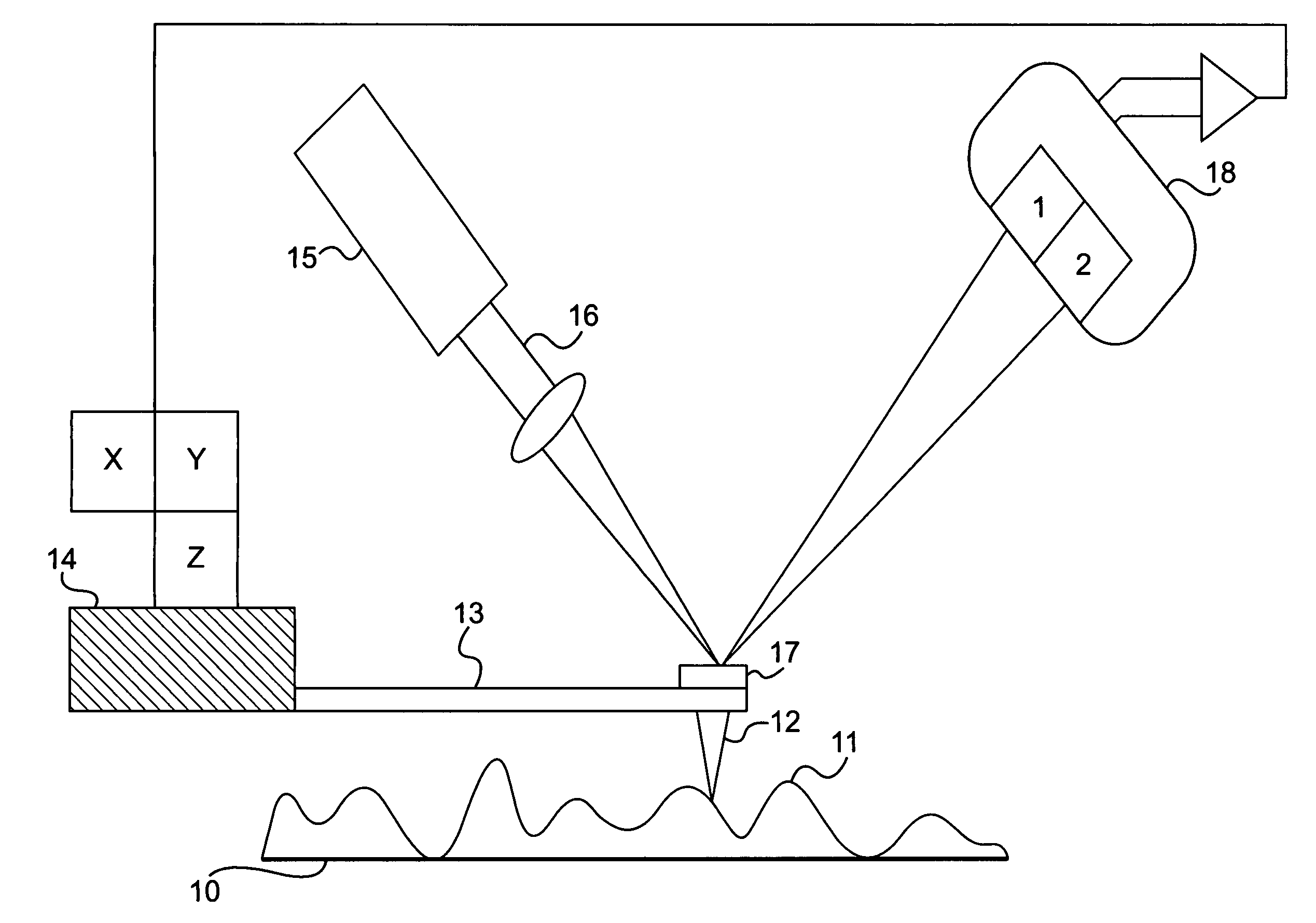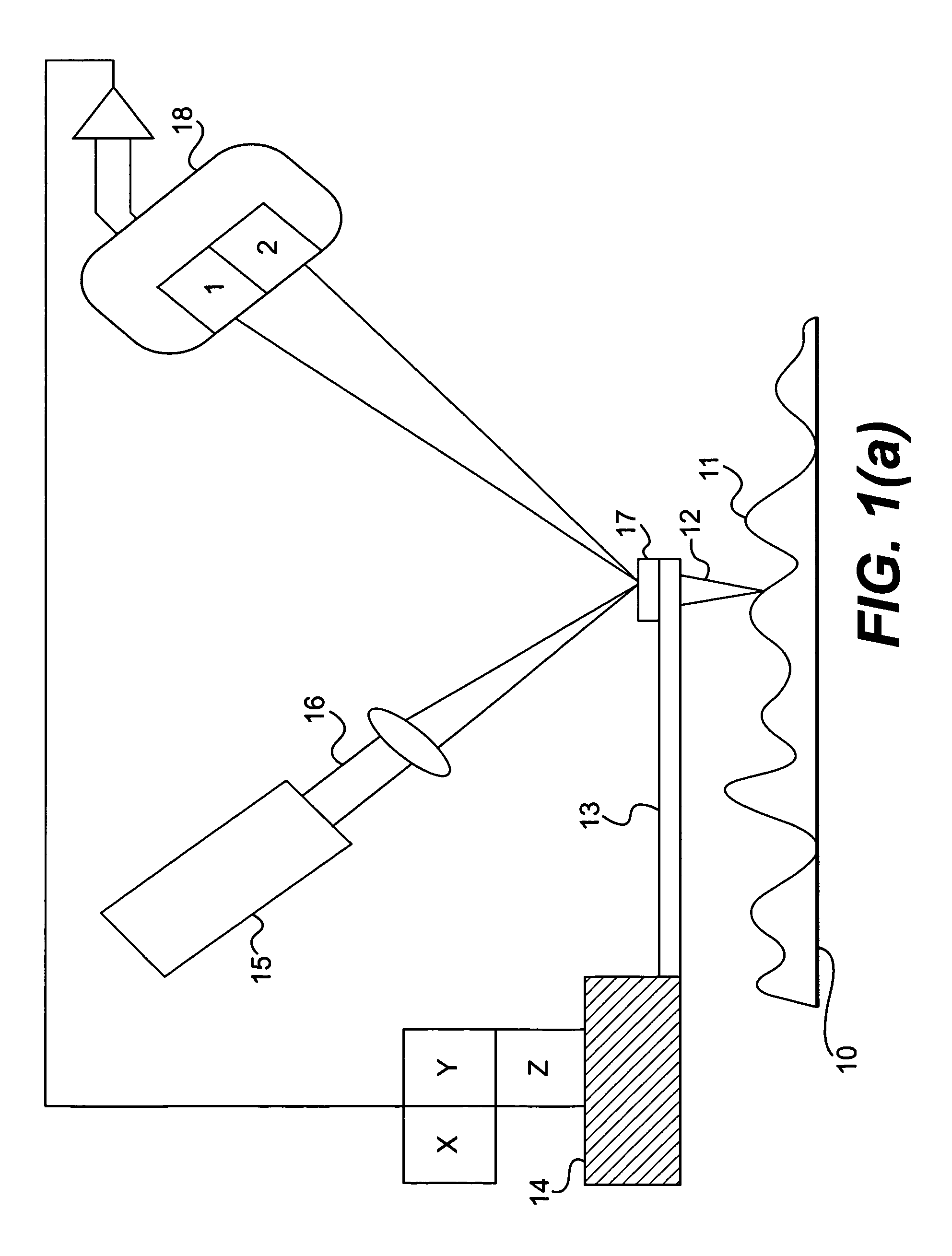System and method for deconvoluting the effect of topography on scanning probe microscopy measurements
a scanning probe and microscopy technology, applied in the field of scanning probe microscopy, can solve the problem of complicating the interpretation of thermal images by topography
- Summary
- Abstract
- Description
- Claims
- Application Information
AI Technical Summary
Benefits of technology
Problems solved by technology
Method used
Image
Examples
Embodiment Construction
[0031]The present invention is described in terms of a thermal SPM. However, in principle, exactly the same approach can be adapted for analyzing data or improving the quality of images obtained using at any SPM mode.
[0032]The present invention solves the problem of the effects of topography on apparent thermal conductivity by deconvoluting the effects due to the surface topography from the effects due to the other physical property (thermal conductivity in the examples described herein) being measured. In one embodiment of the present invention, the deconvolution is performed using a neural network. The image can be considered as a grid of points or pixels, as shown in FIG. 5.
[0033]The probe is moved over the sample, and measurements are made at each point of both the apparent thermal conductivity of the sample and the topography of the sample.
[0034]FIG. 5(a) is an exemplary table showing the local topography for each probe location.
[0035]For each point or pixel, the local topograp...
PUM
| Property | Measurement | Unit |
|---|---|---|
| diameter | aaaaa | aaaaa |
| diameter | aaaaa | aaaaa |
| temperature | aaaaa | aaaaa |
Abstract
Description
Claims
Application Information
 Login to View More
Login to View More - R&D
- Intellectual Property
- Life Sciences
- Materials
- Tech Scout
- Unparalleled Data Quality
- Higher Quality Content
- 60% Fewer Hallucinations
Browse by: Latest US Patents, China's latest patents, Technical Efficacy Thesaurus, Application Domain, Technology Topic, Popular Technical Reports.
© 2025 PatSnap. All rights reserved.Legal|Privacy policy|Modern Slavery Act Transparency Statement|Sitemap|About US| Contact US: help@patsnap.com



